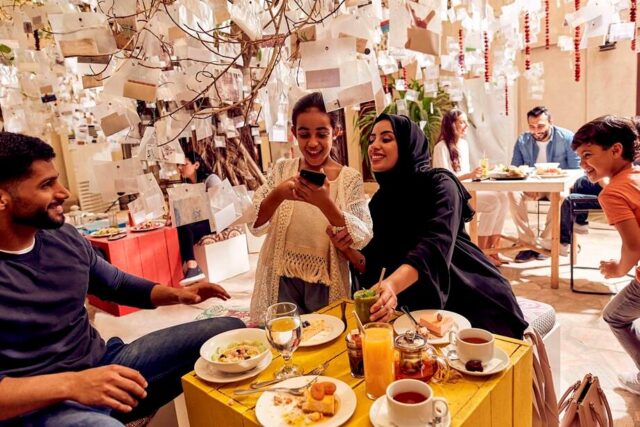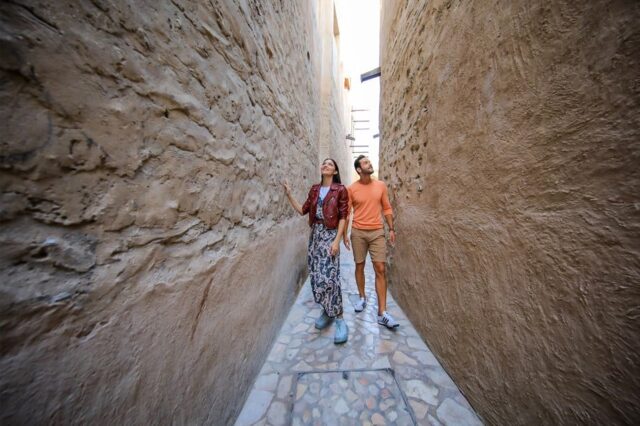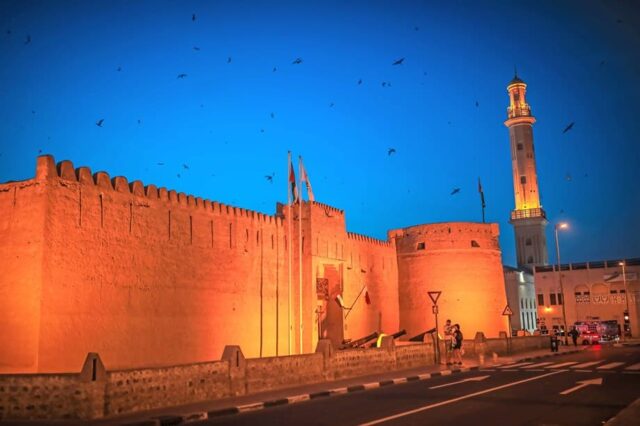It all started in Bur Dubai, one of the oldest neighbourhoods in the city. Long before Dubai transformed into an urban metropolis, this area to the west of Dubai Creek was the site of the city’s original settlement. Today it continues to be a hub of residential and economic activity, sustaining a generous spirit of community that’s typical of Emirati culture.

See it for yourself at Al Fahidi Historical Neighbourhood, a popular stop on every itinerary. Houses with traditional barjeel wind towers are now home to cultural and artistic gems, including XVA art gallery, Coin Museum and the Sheikh Mohammed Centre for Cultural Understanding. Nearby is the city’s oldest building – Al Fahidi Fort. Built in 1787, it was originally used for defence purposes, but is now the proud address for the Dubai Museum.

Bur Dubai is a foodie’s haven. Dine at cafés tucked into the serene courtyards of the Al Fahidi Historical Neighbourhood, or head to the vibrant Meena Bazaar area – Dubai’s Little India – where ethnic eateries offer superb spice-laden curries. After you’ve had your fill, unwind with a gentle ride on an abra, a traditional wooden boat that has traversed the waters of the creek for centuries.

There’s a wonderful range of independent clothing and jewellery shops to explore in this district, with many helmed by owners who have made Dubai their adopted home over decades. Stock up at the Textile Souk, where eager merchants sell exotic fabrics, pashminas, and colourful embroidered cushions, before finding a local tailor nearby to create a made-to-measure outfit.

Getting there: When on the Dubai Metro, you can alight at the Ghubaiba or Al Fahidi station. If taking a water taxi, look out for the Al Ghubaiba marine transport station or Bur Dubai abra station.

![deira-6-media[1] deira-6-media[1]](https://dubai.sakuratraveleg.com/wp-content/uploads/2021/12/deira-6-media1.jpg)
![deira-4-media[1] deira-4-media[1]](https://dubai.sakuratraveleg.com/wp-content/uploads/2021/12/deira-4-media1.jpg)
![derira-clock-tower-getty-carousel[1] derira-clock-tower-getty-carousel[1]](https://dubai.sakuratraveleg.com/wp-content/uploads/2021/12/derira-clock-tower-getty-carousel1.jpg)
![gold-souk-media-dtcm[1] gold-souk-media-dtcm[1]](https://dubai.sakuratraveleg.com/wp-content/uploads/2021/12/gold-souk-media-dtcm1.jpg)
![al-ghurair-center-partner-content[1] al-ghurair-center-partner-content[1]](https://dubai.sakuratraveleg.com/wp-content/uploads/2021/12/al-ghurair-center-partner-content1.jpg)